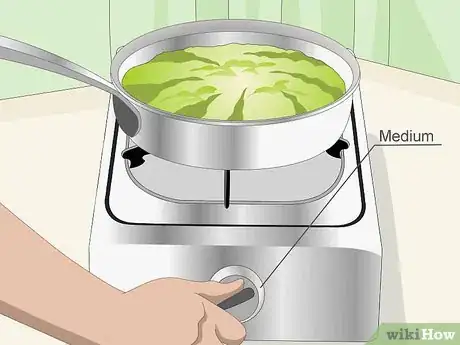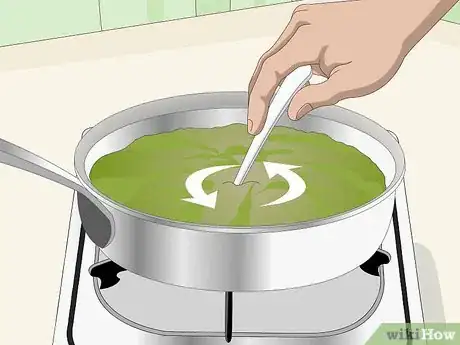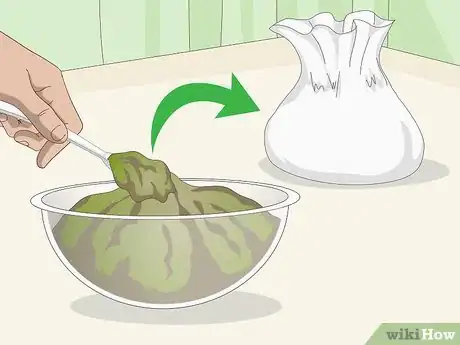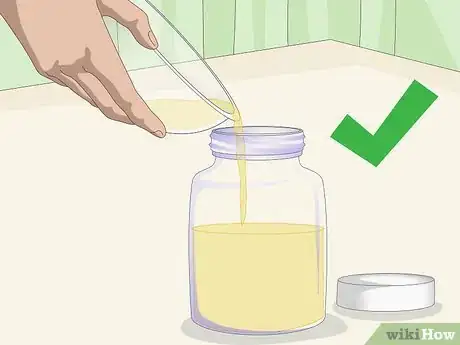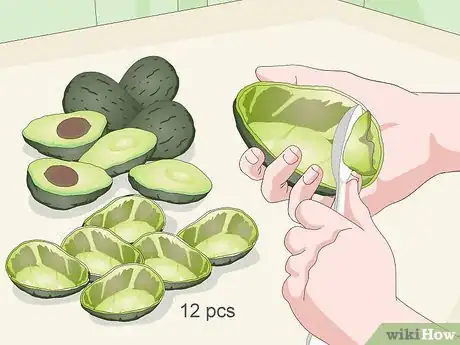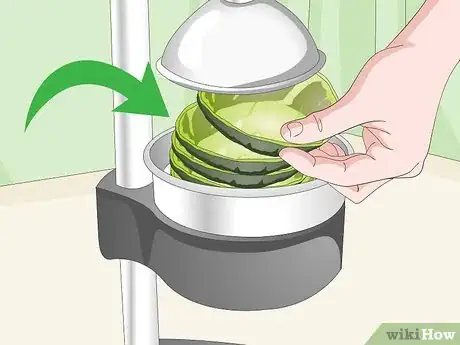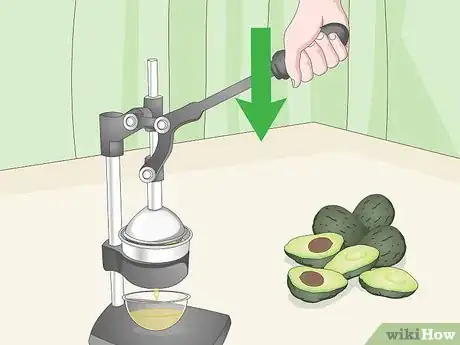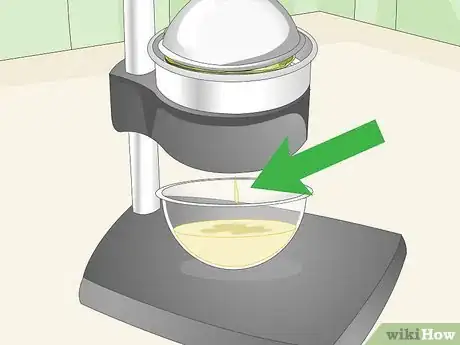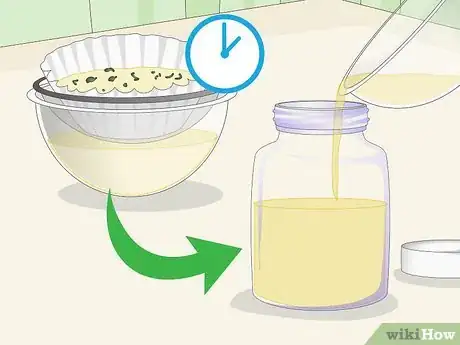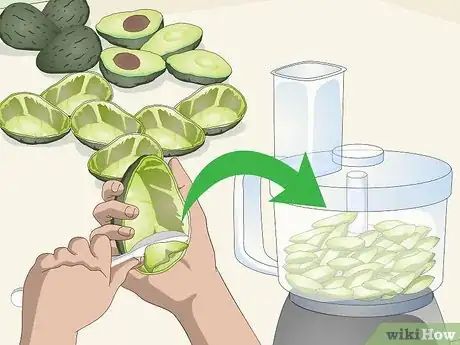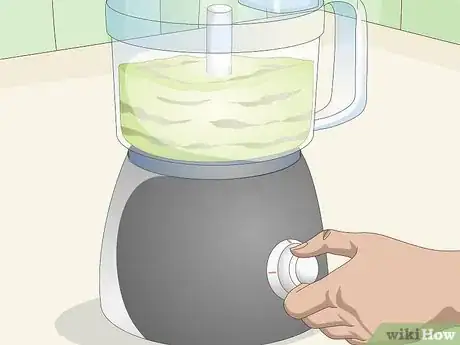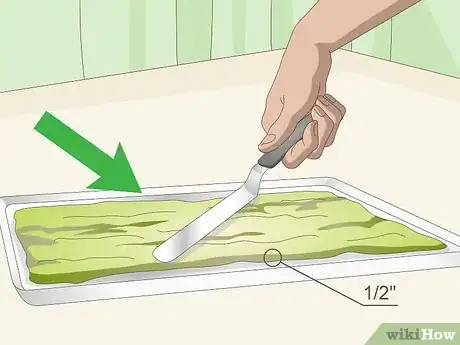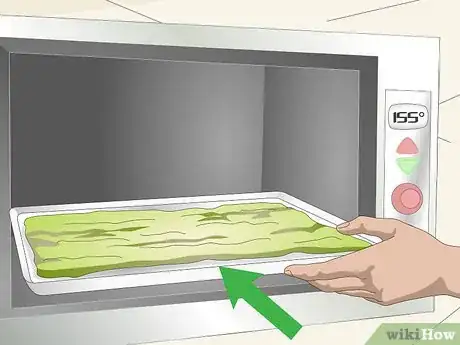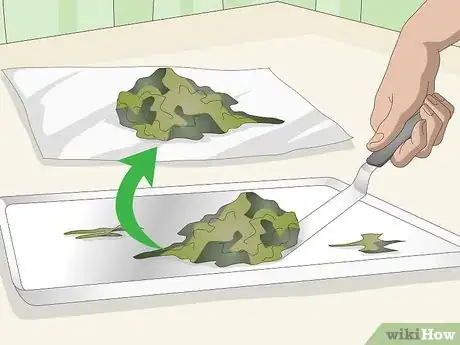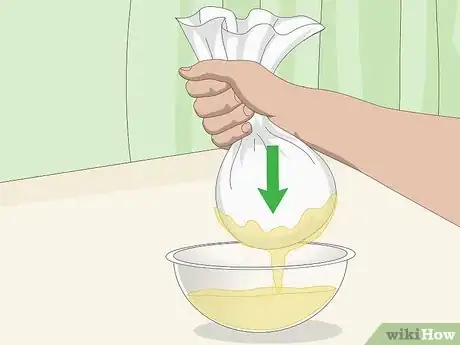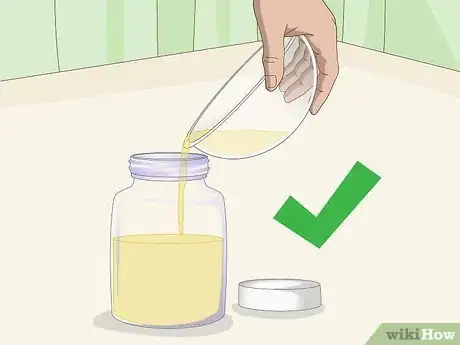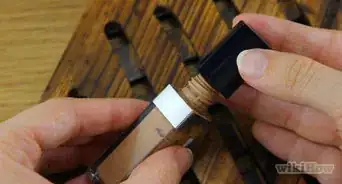This article was co-authored by Alicia Ramos. Alicia Ramos is a licensed aesthetician and the owner of Smoothe Denver in Denver, Colorado. She received her license at the School of Botanical & Medical Aesthetics, with training in lashes, dermaplaning, waxing, microdermabrasion, and chemical peels, and now provides skin care solutions to hundreds of clients.
wikiHow marks an article as reader-approved once it receives enough positive feedback. This article received 24 testimonials and 94% of readers who voted found it helpful, earning it our reader-approved status.
This article has been viewed 518,011 times.
Avocado oil is made by extracting the oil from ripe avocados, and has a number of uses, ranging from cooking and frying to use in hair and skin treatments. Because store-bought avocado oil is often quite expensive, it’s often more economical to prepare the oil at home. Extracting the oil is quite easy, and depending on the method of extraction, you may be left with mashed avocado, perfect for use in baking or in making fresh guacamole!
Steps
Extracting the Oil Through Cooking
-
1Peel twelve avocados. Wash twelve avocados and cut each one in half around the pit. Use the knife to cut in a scooping motion around the pit until the two halves come apart. Use a spoon to scoop out the fruit of the avocado and deposit it in a food processor or blender. Dispose of the skin and the pit.[1]
-
2Puree the avocados. Turn the food processor or blender onto the puree setting. Mix the avocado fruit until it forms a smooth paste. Then scoop out the blended avocado and put it in a medium-sized pot.[2]Advertisement
-
3Cook the avocados on medium heat. Turn the oven on to medium heat and heat the avocados in the pot, stirring every five minutes. When the mixture starts to boil, it will start bubbling and you should notice the avocado oil rising to the top.[3]
-
4Cook until the mixture gets dark. Keep cooking and stirring the mixture until the avocado changes from a light green to a dark green or brown, and the water has evaporated.[4]
-
5Scoop the avocado mixture into a bowl. When the avocado mixture has stopped cooking, spoon the mixture into a bowl. Place a clean, thin cloth such as cheesecloth on top of the bowl, then holding the cloth in place around the rim of the bowl, turn the bowl upside-down and pinch the corners of the cloth together so that you’re left with a sack of avocado.[5]
-
6Squeeze to strain the avocado. Squeeze the sack of avocado over a bowl to strain out the oil. The oil should come out drop by drop into the bowl. Keep changing your grip and squeezing for a minute or so until no more oil is coming out.[6]
-
7Pour the oil into a container. Once you have squeezed out all the oil, pour the oil from the bowl into a small bottle or into a container with a lid. Your avocado oil is now ready for use!EXPERT TIPAlicia Ramos is a licensed aesthetician and the owner of Smoothe Denver in Denver, Colorado. She received her license at the School of Botanical & Medical Aesthetics, with training in lashes, dermaplaning, waxing, microdermabrasion, and chemical peels, and now provides skin care solutions to hundreds of clients.Skincare Professional

 Alicia Ramos
Alicia Ramos
Skincare ProfessionalDid You Know? Avocados are rich in vitamins (C, E, K, B-6, for example) and contain lots of good fats. When turned into oil, the vitamins and fats provide plenty of moisture to your skin and promote healing, among many other benefits!
Extracting the Oil by Pressing Avocado Skins
-
1Remove the fruit from the skins of twelve avocados. Slice the avocados in half around the pit, then do a scooping motion with the knife to separate the two halves of the avocados. Use a spoon to scoop out the fruit of the avocados and set it aside. Dispose of the pit.[7]
- You can use the fruit of the avocados in guacamole or other recipes!
-
2Place the avocado skins in an orange press. Take the avocado skins that you just separated and stack them on top of each other. Then place the stack of avocado skins in an orange press.[8]
- An orange press is designed to juice oranges and other citrus fruits, but it also does a good job of pressing the oil out of avocado skins.
-
3Press the avocado skins. Pull down the lever of the orange press until the mallet of the press touches the avocado skins. Then pull down on the lever with as much force as you can. The mallet will press the avocado skins together and squeeze out the oil.[9]
- The avocado oil should fall into the reservoir under the press.
- Consult the instructions on your orange press if you aren’t sure how it works.
-
4Press until the oil stops dripping. Press the avocado skins several times to extract all the oil. If not all the surface of the skins is being pressed, reposition the skins so that you can press the un-pressed areas.[10]
-
5Strain the oil. Take the reservoir out from the bottom of the press. You may see bits of avocado fruit or skin floating in the oil. If you see anything aside from the oil in the reservoir, strain the oil by placing a coffee filter inside a fine strainer, then resting the strainer inside a bowl pouring the oil through the strainer into the bowl.[11]
- The coffee filter will catch any chunks of avocado that may have gotten into the reservoir.
-
6Let the oil filter, then bottle it. Keep the strainer over the bowl overnight. This allows the oil that may be sticking to the avocado pieces to slowly filter into the bowl. After it has finished filtering, pour the avocado oil into a small bottle and seal it.[12]
Extracting the Oil by Sieving Dried Avocados
-
1Take out the fruit of twelve avocados. Slice the avocados in half around the pit, then use the knife to scoop around the pit and separate the avocado halves. Spoon out the fruit of the twelve avocados and place it in a food processor.[13]
-
2Puree the avocado in a food processor. Once you have scooped out the fruit of the twelve avocados into the food processor, puree the avocados until you are left with a thick paste.[14]
- You can also hand mash the avocados if you don’t have a food processor.
-
3Spread the avocado on a baking tray. Spoon out the mashed avocado onto a baking tray, then use a spatula to spread the avocado out into as thin a layer as you can. Try to make the layer about half an inch (1.3 centimeters) thick.
-
4Put the tray of avocado into the oven. After you have spread the avocado out into a thin layer, place the tray into the oven. You don’t need to preheat it, but be sure not to set the temperature to more than 155 degrees F (50 degrees C). You are trying to dry the avocado out, not bake it.[15]
- You can also put the tray of avocado outside to dry in the sun for about two days.
-
5Keep the avocado in the oven for five hours. Let the avocado dry out in the oven for around five hours. Check every hour or so to make sure the avocado isn’t burning. It should be a dark-brownish green; if is turning black, take it out of the oven.[16]
-
6Remove the avocado from the tray. After five hours are up, take the baking pan out of the oven. Use a spatula to work against the avocado layer and scratch it off of the pan. Place the avocado scraps into a thin cotton cloth or a square of gauze.[17]
-
7Squeeze the sack of avocado into a bowl. Lift up the cloth with the avocado and pinch the corners together so you make a sack of sorts. With as much force as you can, squeeze the dried avocado into a bowl. Readjust your grip as you are squeezing to make sure that you have squeezed all of the avocado. Stop when the avocado stops yielding oil.[18]
-
8Pour the avocado oil into a bottle. When you have squeezed all of the avocado oil into the bowl, dispose of the cloth and the dried avocado. Then pour the avocado oil into a bottle and seal it.[19]
Community Q&A
-
QuestionCan avocado oil lighten/whiten the skin/face?
 Community AnswerNo, it cannot, as it is not acidic. All skin colors are beautiful. Embrace your melanin!
Community AnswerNo, it cannot, as it is not acidic. All skin colors are beautiful. Embrace your melanin! -
QuestionIs avocado oil is good for preventing hair loss?
 Community AnswerYes, in addition to being a great moisturizer and conditioner for hair, avocado oil contains nutrients that boost hair growth.
Community AnswerYes, in addition to being a great moisturizer and conditioner for hair, avocado oil contains nutrients that boost hair growth. -
QuestionCan this be used as Cooking oil?
 Community AnswerYes, you can use avocado as a cooking oil. It has a high smoke point and therefore can be used for frying.
Community AnswerYes, you can use avocado as a cooking oil. It has a high smoke point and therefore can be used for frying.
References
- ↑ http://oilypedia.com/how-to-make-avocado-oil-at-home/
- ↑ http://oilypedia.com/how-to-make-avocado-oil-at-home/
- ↑ http://oilypedia.com/how-to-make-avocado-oil-at-home/
- ↑ http://oilypedia.com/how-to-make-avocado-oil-at-home/
- ↑ http://oilypedia.com/how-to-make-avocado-oil-at-home/
- ↑ http://oilypedia.com/how-to-make-avocado-oil-at-home/
- ↑ https://www.leaf.tv/articles/how-to-make-homemade-avocado-oil/
- ↑ https://www.leaf.tv/articles/how-to-make-homemade-avocado-oil/
- ↑ https://www.leaf.tv/articles/how-to-make-homemade-avocado-oil/
- ↑ https://www.leaf.tv/articles/how-to-make-homemade-avocado-oil/
- ↑ https://www.leaf.tv/articles/how-to-make-homemade-avocado-oil/
- ↑ https://www.leaf.tv/articles/how-to-make-homemade-avocado-oil/
- ↑ http://beauty.onehowto.com/article/how-to-make-your-own-avocado-oil-at-home-easily-4008.html
- ↑ http://beauty.onehowto.com/article/how-to-make-your-own-avocado-oil-at-home-easily-4008.html
- ↑ http://beauty.onehowto.com/article/how-to-make-your-own-avocado-oil-at-home-easily-4008.html
- ↑ http://beauty.onehowto.com/article/how-to-make-your-own-avocado-oil-at-home-easily-4008.html
- ↑ http://beauty.onehowto.com/article/how-to-make-your-own-avocado-oil-at-home-easily-4008.html
- ↑ http://beauty.onehowto.com/article/how-to-make-your-own-avocado-oil-at-home-easily-4008.html
- ↑ http://beauty.onehowto.com/article/how-to-make-your-own-avocado-oil-at-home-easily-4008.html
About This Article
To make avocado oil, start by pureeing 12 avocados in a blender. Next, cook the avocado paste in a pan on medium heat until it starts boiling. Then, continue cooking and stirring the mixture until it turns dark green or brown before putting it in a bowl and placing a cheese cloth on top. After that, turn the bowl upside down so the paste falls into the cloth, then squeeze the cloth until the oil drips into the bowl. Once you've squeezed out all of the oil, transfer it to a small bottle or a sealable container. For tips on how to extract the oil from avocado skins or by sieving dried avocados, keep reading!


